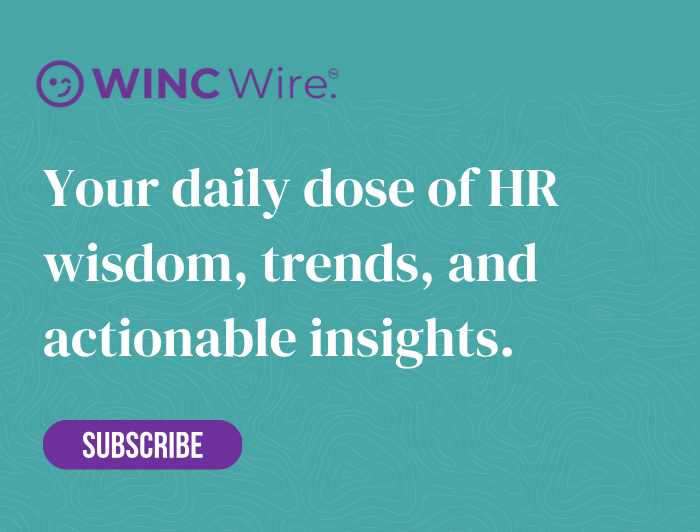We’ve all been there, haven’t we? Watching recruitment teams sprint from one urgent hire to the next, perpetually behind the curve whilst senior leaders wonder why talent acquisition feels more like damage control than strategic advantage. The truth is, most organisations treat recruitment as a reactive service rather than what it should be: a proactive driver of business capability.
Think about it this way: would you run your finance function by only looking at last month’s numbers? Of course not. Yet somehow, we’ve accepted that recruitment should operate in constant firefighting mode. There’s a fundamental shift waiting to happen, one that transforms your talent acquisition from order-taking to business-shaping.
Step 1: Start with Strategy, Not Job Specs
Here’s where most recruitment plans go wrong: they begin with a vacancy rather than a vision. You wouldn’t design a customer experience by starting with individual touchpoints, would you? The same logic applies to building teams.
- Get Inside Leadership Thinking: What’s keeping your C-suite awake at night? Market expansion, digital disruption, competitive pressure? These strategic challenges directly translate into talent requirements, but only if you’re asking the right questions.
- Map Roles to Outcomes: Work backwards from business objectives. Which positions actually move the needle on your organisation’s critical success factors? This exercise often reveals that some “urgent” hires aren’t really urgent at all.
- Use Data as Your North Star: Your historical recruitment data tells a story about bottlenecks, successful sourcing channels, and where candidates typically drop off. Combine this with stakeholder feedback to build a realistic picture of what’s working and what isn’t.
When recruitment planning starts with business strategy rather than immediate needs, something powerful happens: every hire becomes intentional, every role contributes to a larger purpose.
Step 2: Master the Art of Strategic Prioritisation
Not all open positions are created equal, yet we often treat them as if they are. The most successful talent teams I’ve worked with understand that impact trumps urgency every single time.
- Distinguish Critical from Convenient: Challenge hiring managers to categorise roles based on business impact. Revenue-generating positions versus administrative support require entirely different approaches and timelines.
- Align Hiring with Financial Reality: Budget constraints aren’t limitations, they’re planning parameters. Understanding cash flow cycles and seasonal variations helps you phase recruitment intelligently rather than reactively.
- Build Agility into Your Framework: Markets shift, priorities change, unexpected opportunities arise. Your recruitment plan should flex without breaking. Schedule regular recalibration sessions to ensure you’re still solving the right problems.
Smart prioritisation doesn’t slow down recruitment; it accelerates the right recruitment whilst avoiding the costly mistakes that come from hiring in haste.
Step 3: Orchestrate Timing Like a Conductor
Timing in recruitment is everything, yet it’s often the most misunderstood aspect. Everyone wants speed, but what they really need is predictability and progress.
- Create Realistic Milestone Maps: Break each recruitment process into specific phases with data-backed timeframes. Senior executive searches naturally take longer than graduate positions, and your stakeholders need to understand why.
- Educate Your Internal Customers: Hiring managers often don’t grasp the complexity behind finding the right candidate. Share your methodology, explain market conditions, and set expectations early to build trust and patience.
- Customise by Complexity: A one-size-fits-all timeline is a recipe for frustration. Technical specialists, cultural fits, and leadership roles each have their own rhythm. Honour these differences rather than forcing artificial uniformity.
When everyone understands the tempo and trusts the process, recruitment transforms from a source of anxiety into a source of confidence.
Step 4: Source with Surgical Precision
The “post and pray” approach to sourcing is not just ineffective, it’s expensive. The best recruitment strategies are targeted, thoughtful and built on deep understanding of where your ideal candidates actually spend their time.
- Start Every Search with Alignment: Before you write a single job description, convene all stakeholders to define success. What does good look like? What’s negotiable? What’s absolutely non-negotiable? This conversation prevents costly mid-process course corrections.
- Think Like a Detective: Your target candidates aren’t necessarily scrolling job boards. They might be active in professional forums, attending industry conferences, or engaged with thought leaders on social platforms. Map their professional ecosystem.
- Make Your Culture Irresistible: Your employee value proposition should be so compelling that passive candidates start imagining themselves working for you. This isn’t marketing fluff; it’s competitive differentiation in a candidate-driven market.
Strategic sourcing is about quality conversations with qualified candidates, not quantity metrics that look impressive in reports but deliver mediocre results.
Step 5: Execute with Military Precision
Even brilliant sourcing falls apart without flawless execution. Candidates judge your organisation by every interaction, and hiring managers lose confidence when processes feel chaotic or unprofessional.
- Eliminate Administrative Friction: Modern ATS systems can handle scheduling, reminders and basic communications automatically. Why are your people still playing email tennis to book a simple interview?
- Standardise Without Sterilising: Structured evaluation criteria ensure fairness and legal compliance whilst reducing unconscious bias. But don’t let process kill personality or cultural assessment.
- Communicate Like You Care: Every candidate touchpoint should feel personal and professional. Automated doesn’t have to mean impersonal, and efficient doesn’t have to mean cold.
Exceptional execution isn’t just about candidate experience, though that matters enormously. It’s about building credibility with your internal stakeholders and positioning recruitment as a high-functioning business partner.
Step 6: Measure Everything That Moves the Needle
If recruitment wants to be taken seriously as a strategic function, it must demonstrate measurable impact on business outcomes. Data isn’t just helpful here; it’s essential for continuous improvement and stakeholder confidence.
- Establish Regular Feedback Loops: Weekly check-ins with active hiring managers and monthly strategic reviews with department heads create ongoing opportunities for course correction and relationship building.
- Track Leading and Lagging Indicators: Time-to-hire tells you about efficiency, but candidate experience scores predict future talent pipeline strength. Quality of hire metrics matter more than speed metrics in the long run.
- Experiment Systematically: Test new sourcing channels, adjust screening processes, refine interview formats. Treat each recruitment campaign as a learning opportunity that informs future strategy.
Data-driven recruitment isn’t just about proving value; it’s about creating value through continuous optimisation and evidence-based decision making.
Step 7: Build for Tomorrow, Not Just Today
The most sophisticated recruitment functions don’t just respond to current needs; they anticipate future requirements and position their organisations ahead of talent market shifts.
- Schedule Strategic Planning Sessions: Quarterly reviews ensure your recruitment strategy evolves with business priorities, market conditions, and internal feedback. Agility should be built into your operating model, not bolted on afterwards.
- Elevate Recruitment’s Strategic Role: As your planning process matures and delivers consistent results, recruitment naturally evolves from a support function to a strategic capability that influences business decisions.
This transformation takes time, but the payoff is substantial: recruitment becomes a competitive advantage rather than a necessary expense.
Moving Beyond Reactive Recruitment
Here’s what I’ve learned after watching countless organisations struggle with talent acquisition: the problem isn’t usually capability, it’s approach. When recruitment operates strategically rather than reactively, when it’s built on data rather than assumptions, when it’s aligned with business objectives rather than just immediate needs, everything changes.
Your recruitment function can become a source of competitive advantage, a driver of organisational capability, and a strategic partner that shapes rather than simply serves business needs. The question isn’t whether this transformation is possible; it’s whether you’re ready to move beyond firefighting and start building the workforce your organisation actually needs.






